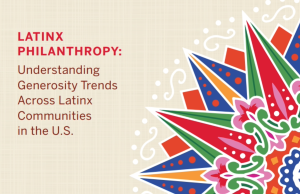When Dr. Evil tells Austin Powers, “We’re not so different, you and I,” near the climax of the 1997 film, “Austin Powers: International Man of Mystery,” the global super villain could very well have been talking about the correlation between political giving and philanthropy.
The principles and dynamics involved in both nonprofit and political fundraising are similar, and so is donor intent, William H. Miller, CFRE, president and CEO of the Kean University Foundation in Union, N.J., wrote in a paper titled, “Prospect identification in an election year.”
Charitable donors want to see improved programs, literacy rates, health, housing, according to Miller. Political donors want to see inspiring leaders elected who will put new policies into place. However, the desire to make a difference — by creating a better society or a stronger community — is at the core of both political and philanthropic fundraising.
One of the most dramatic differences between the average nonprofit donor and the political donor is household income. People who give to presidential campaigns tend to have higher incomes (50 percent above $100,000), while those who give to nonprofits tend to have moderate to low incomes (50 percent between $25,000 and $75,000).
Miller noted several things that political and nonprofit fundraisers have in common:
- Both are speaking to the same audience. Individuals who are civically engaged are also philanthropically inclined.
- The public doesn’t distinguish between political and charitable fundraising.
- Both have common challenges: The public’s views about fundraising are influenced by negative media coverage and scandals, as well as telemarketing.
- Political fundraisers secure large amounts of money in short periods of time under stringent constraints, with fewer tools and techniques, and under tremendous public scrutiny. Nonprofit fundraisers should examine how they meet these challenges.
Organizations that examine political giving as they conduct prospect research, according to Miller, are better able to identify new prospects, build positive relationships with potential donors, and, to a large extent, upgrade financial prospects.
In a presidential election year, competition for the charitable dollar will certainly increase and become even fiercer than it already is, Miller said. In addition to the hundreds of billions of dollars that are given to worthy nonprofits this year, presidential candidates are also actively fundraising.
“While some in the nonprofit sector might find this extra competition to be discouraging, it is actually a great year for prospect research and qualification,” Miller said.











